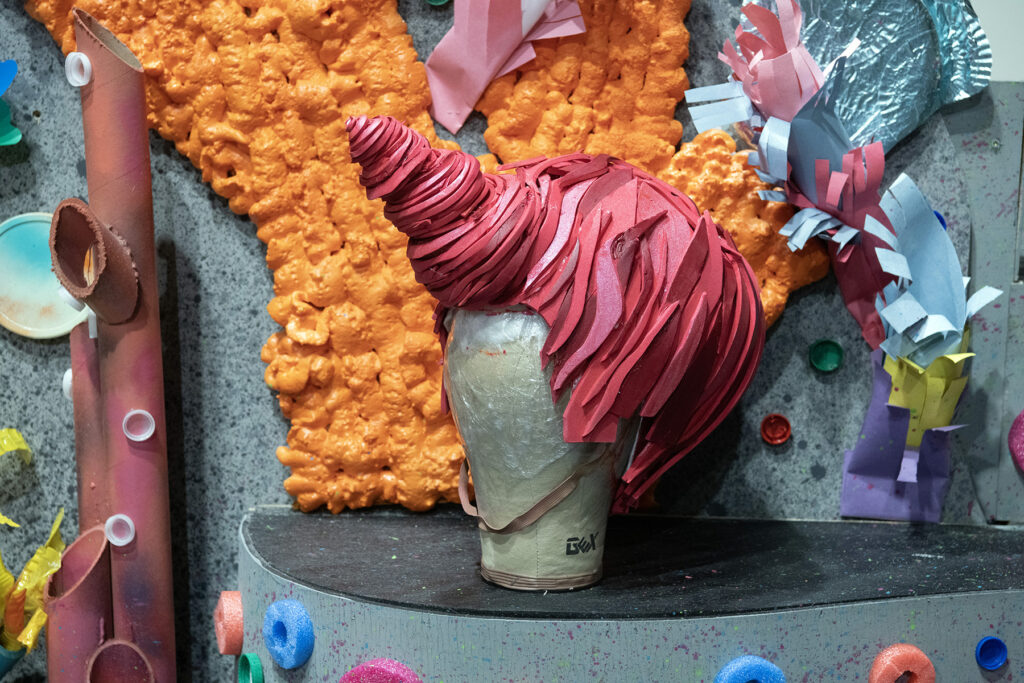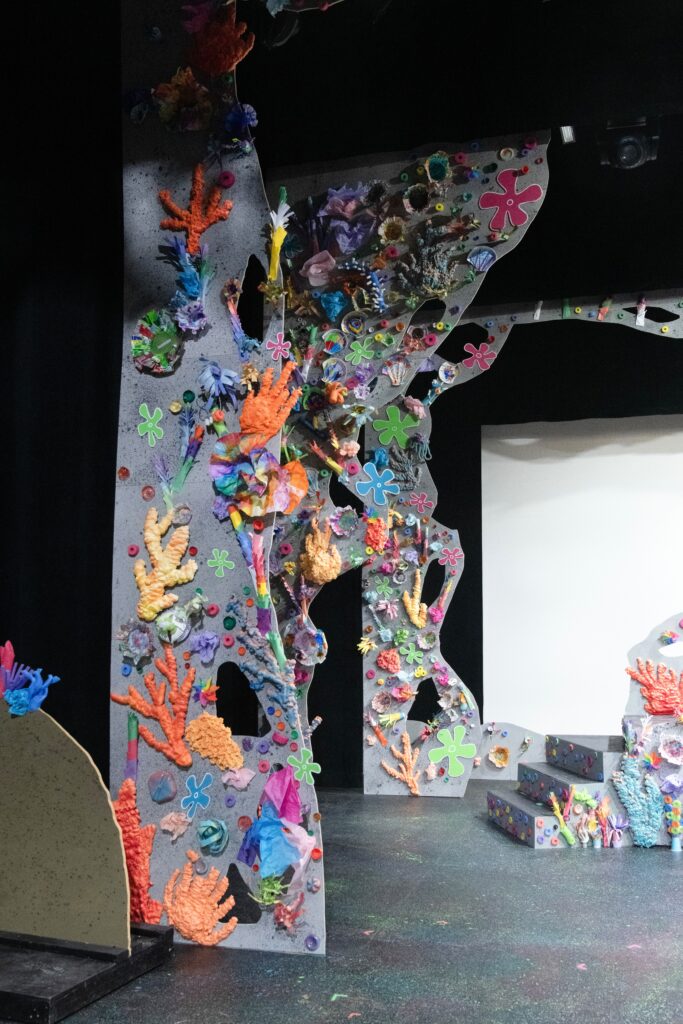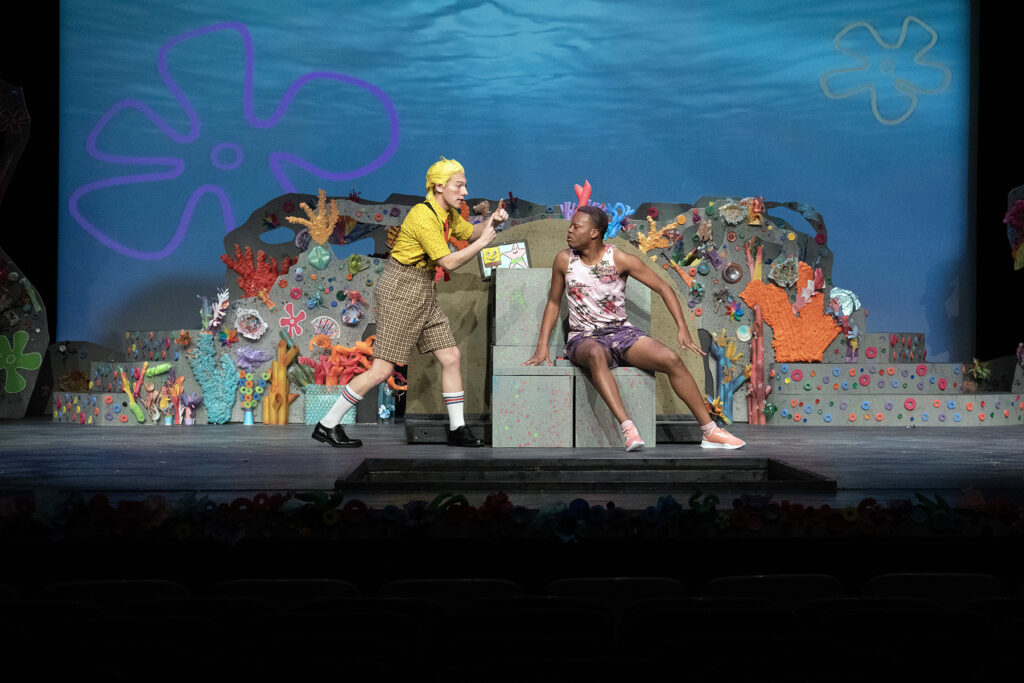Ball Bearings Visual Editor Brenden Rowan is a part of the Department of Theater and Dance at Ball State University and approved the final design of this page, but was not involved with editing the story.
Sets are built, costumes are sewn, lights are rigged, and after the final performance, much of it ends up in storage or the trash. In an industry rooted in creativity and reinvention, theater programs are now beginning to confront the environmental cost of their craft.
Theatre has a history of contributing to environmental waste. From elaborate sets to staging productions that run for only a few days, the industry generates a significant amount of waste, according to the Theatre Green Book.
However, a growing movement is changing that approach: Green theater.Green theater is an initiative focused on reducing waste and making performances more eco-friendly, according to American Theatre. This initiative emphasizes reducing waste and making productions more eco-friendly, a movement that Ball State has begun to embrace in its own productions.
One standout example of sustainable theater at Ball State was the 2023 production of “SpongeBob SquarePants,” directed by Andy Waldron. The production stands as a testament to the creativity that can be achieved and the obstacles that may arise when eco-friendly principles are prioritized.

Photo Provided


The production team behind the show directed by Waldron collaborated with the art program at Burris Laboratory School, where students used everyday items — including anything from cans and bottles to paper plates and cardboard — to craft scenic elements.
“I prioritized these elements because I really wanted to engage area youth in the creation of this youth-forward musical. This not only establishes fun elements for the cast, crew and audience, but it also shows young people that their art is important, fun, and they can engage in the theater process,” Waldron says.
However, the process didn’t happen without challenges. Waldron noted that while student-made artwork added a unique touch to the set, it also slowed down the production schedule. The timing of when he could enter the art classrooms to gather the pieces was later than expected, which led to a sudden rush for materials.
Additionally, Waldron made sure to save as much of the youth-created artwork as possible, giving the students the opportunity to take their creations home.
While this level of sustainability was possible through creative reuse and collaboration, there are various challenges that prevent these practices from being applied regularly, says assistant teaching professor of lighting design Corey Lee.
“A lot of what we do is we prep something that runs for a few weeks, and then we tear it apart,” Lee says.
He acknowledges that the custom-made set pieces and materials used in many productions often cannot be reused due to their unique nature.
Lighting design also presents challenges, especially in terms of energy consumptions and the non-recyclable plastics found in gel filters, which are used to alter the color of stage lighting.
Lee points out that the energy use of traditional stage lighting fixtures contributes significantly to a production’s environmental footprint. However, with the advent of LED lighting technology, Lee sees a potential shift towards greener practices.
“LEDs save energy, they last longer, and they reduce the need for non-recyclable gels,” Lee noted.
For Lee sustainability in theatre is about more than just reducing waste — it’s about education and giving back to the community. He not only says there is a place for public awareness about the harmful effects of pollution but also hopes to instill environmentally friendly practices in his students.
His goal is for them to carry these ideas into their work long after they leave his classroom.
“We just have to be aware of what all of this does to our environment so that we can leave a better place on earth for our children, grandchildren, all those that are yet to come,” Lee says.
Beyond Ball State, Lee has taken part in sustainable productions at the Fort Wayne Civic Theatre such as “Every Brilliant Thing,” a story that explores the complexities of mental health over a lifetime.
Behind the scenes, the theater put its best foot forward by being mindful of its material output throughout the production.
“Almost all of our props were paper, and could be recycled at the end of the production. Any paint that was used for the production was left over from other productions, and some things we already had. Our programs or playbills had a digital option so that we were able to reduce waste from paper copies,” Lee says.
For nearly 30 years, John Sadler has been shaping productions as the scene shop supervisor in the Department of Theatre and Dance. Incorporating eco-friendly practices into set design has become a natural extension of his approach.
Sadler teaches different approaches to the creative process while emphasizing the importance of reusability and sustainability in design.
For example, for one of his class projects, he challenges his students to make props out of found objects.
The green theater approach impacts waste management, sustainability, design, and production from a broader perspective, according to The Theatre Green Book. However, for Sadler, it ultimately comes down to the people involved and the materials they use.
“A lot of paints and things that we use are not necessarily great for the environment nor the humans that use them, and there are companies out there that are working on making better products,” Sadler says.
Major cities like New York and Chicago have theater organizations dedicated to sustainability, such as the Broadway Green Alliance. These groups promote eco-friendly practices, advocate for sustainable production methods, and highlight the benefits of incorporating green initiatives into the performing arts.
Sadler says these alliances benefit the prop world because they encourage more collaboration between theaters.
“[The alliances] are working on creating a prop coalition where they have a shared set of props among multiple theaters. Instead of one theater owning 32 bentwood chairs and another theater owning 32 bentwood chairs, two theaters will own the same set of chairs, and they can kind of cooperate [with] each other,” Sadler says.
John Rawlings, the technical director for the Department of Theatre and Dance, plays a key role in set design for all productions. He oversees students as they piece together the elements of a production like a puzzle, each component contributing to the larger story. For Rawlings, a crucial part of that puzzle is finding ways to incorporate green theater principles.
“There was kind of a joke in grad school where it was like, [green theater] becomes popular about every four years. People like to talk about sustainability … sometimes the practices that you’re trying aren’t actually more green because their carbon footprint is bigger,” Rawlings says.
From a design standpoint, incorporating green practices can be challenging due to the wide range of materials involved in both the design and construction processes, says Rawlings. Balancing sustainability with the structural and artistic demands of a production requires careful planning.
“With scenery, we’re often building things that are not reusable, [meaning at] the end of the production, you end up having to throw out something. The way that I try to manage that is to use what we call stock, which are specific sizes,” Rawlings says. “We keep certain things around, and then we try to manage the build around what we have in stock … that way, we’re purchasing less, we’re throwing less out, which lowers our footprint.”
Rawlings incorporates eco-friendly practices on set and in his classes, demonstrating various ways to repurpose materials creatively and sustainably.
“It’s not fun to throw away everything. It’s not a fun puzzle if, at the end, you just chuck all the pieces into the trash. I think it’s more fun to figure out how to make it,” Rawlings says.
Sources: American Theatre, Theatre Green Book



